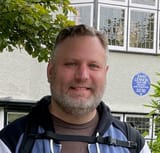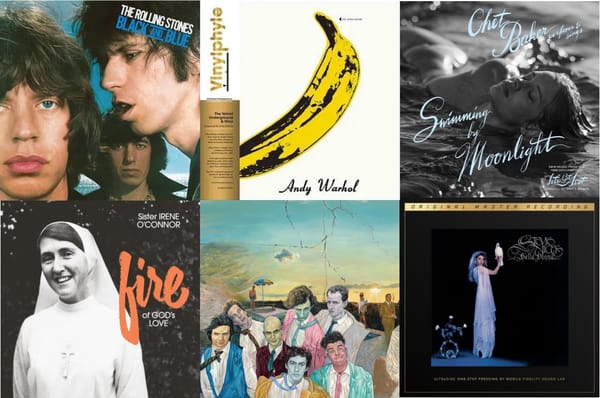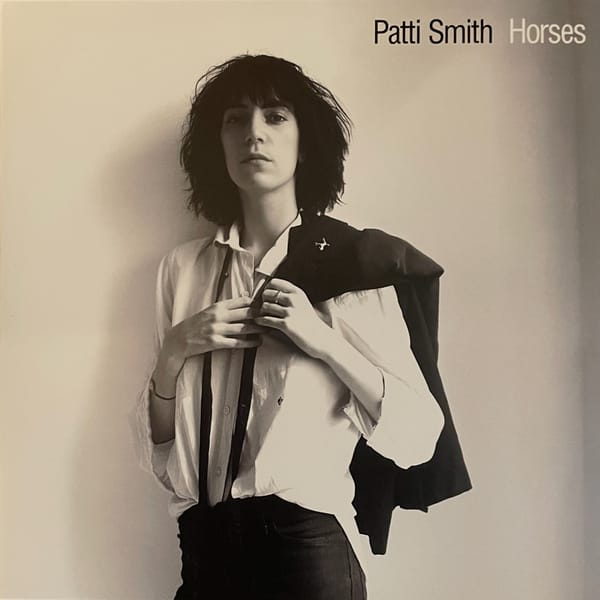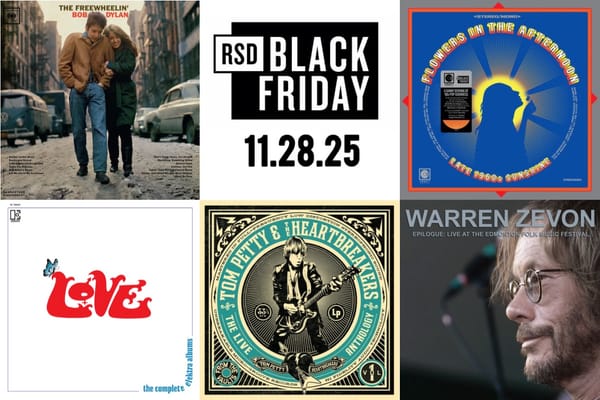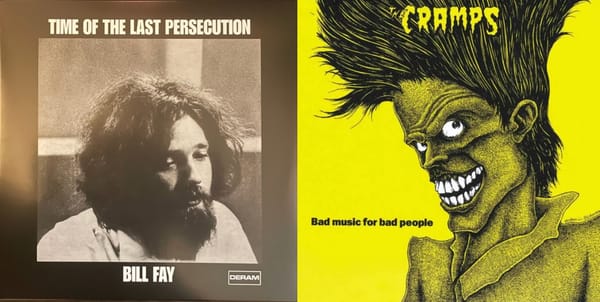Reviews: Split Enz | Chet Baker | Rousers

We spin vinyl copies of the new ENZyclopedia Volumes One & Two, Swimming by Moonlight, and Sire Session 1979.
Today we’ve got reviews of three new archival releases that came out on vinyl. First up is the 3-LP set that collects the early work of New Zealand band Split Enz, a condensed version of the 5-CD set that also hits stores today. Then we look at some previously unreleased sessions by Chet Baker that were in the archive of photographer/filmmaker Bruce Weber, who directed the 1988 Baker documentary Let’s Get Lost. And lastly, we’ve got a studio audition from a New York band that dates from the heyday of CBGB’s and Max’s Kansas City but, unlike many of their peers, never hit the big time.
Split Enz: ENZyclopedia Volumes One & Two
Chet Baker: Swimming by Moonlight
Please take a moment to subscribe if you aren’t already reading this in your inbox. That way you won’t miss any of our vinyl reviews, new release rundowns, RSD coverage, or all of the other stuff we’ve got planned. October and November have been insane for reissues and suddenly, we’ve got literal stacks of records to get through and review. It’s a nice problem to have, and it’ll be even nicer if you’re all subscribed up and can read our coverage as soon as it’s posted. If you already ARE a subscriber, thanks for suffering through that paragraph with us. You’re tops in our book. Thank you.
All right, that’s enough pleading and wheedling for today. Let’s get on to the reviews.

Split Enz: ENZyclopedia Volumes One & Two
Review by Robert Ham
Within two years of their debut album, 1975’s Mental Notes, art-rock outfit Split Enz would chart a single in the Top 40 and an album in the Top 10 in their native New Zealand, well on their way to achieving success in Europe and North America. But to get there, the sprawling septet had to go through multiple lineup changes, image upgrades, and musical overhauls in a remarkably short timespan.
ENZyclopedia Volumes One & Two, a newly released 3-LP collection, tracks the furtive and fertile period of Split Enz prior to their proper commercial breakout. The box set brings together remastered versions of the group’s first two proggy albums, Mental Notes and 1976’s Second Thoughts, with a third LP that is a reworking of the 1979 compilation The Beginning of the Enz, which includes remixed versions of demos and singles along with remasters of four other early tracks. It’s a twisting, meandering journey through the headspace of these daring Kiwis, but one that feels necessary to experience in order to more fully appreciate the heights they would soon reach in 1977 with the hit “My Mistake” or future new wave playlist mainstays like “I Got You” and “One Step Ahead.”
When singer/songwriters Tim Finn and Phil Judd started the band in the early ’70s, it was known as Split Ends and had a ramble-tamble vibe, as represented in this set by the two songs that made up their 1973 debut single, “For You” b/w “Split Ends.” Accompanied by flute and fiddle, the pair’s vocal harmonies are rough-hewn and charming, reminding me of the Humblebums, Gerry Rafferty and Billy Connolly’s late ’60s/early ’70s folk duo. But even in these tracks—and others on Beginning that were recorded around the same time, like the stirring “Home Sweet Home”—Finn, Judd, and their growing cohort were pushing at the edges of their chosen sound, letting complex song structures and blasts of electric instruments creep into the mix.
By the time the band—now dubbed Split Enz, with the intentional misspelling of “Ends” done as a nod to their home country—settled into Sydney’s Festival Records to track their debut album Mental Notes, it had ballooned in physical size and musical scope. Joining Finn and Judd were keyboardist Eddie Rayner, guitarist Wally Wilkinson, bassist Mike Chunn, drummer Emlyn Crowther, and percussionist Noel Crombie, and with their collective help, they shot for the stars. From opening track “Walking Down a Road,” it sounds as though the two songwriters spent the months prior to these sessions poring over every last second of Genesis’s 1974 epic The Lamb Lies Down on Broadway, using it as a road map for their own knotty sagas like “Walking Down a Road,” and “Stranger Than Fiction.” The vestiges of their previous sound sneak through on “Amy (Darling)” and “Titus,” but even then, the wowing tones of Rayner’s Mellotron and their herky-jerky tempos further remove those songs from their rootsy origins.
As their commercial prospects started to tick up in the wake of Mental Notes’s release, so did Split Enz’s artistic ambitions. The group began putting on a proper show, taking to the stage in elaborate, often colorful costumes and copious amounts of face paint. Phil Manzanera caught one such gig when Roxy Music toured Sydney for the first time in 1975. According to his statement in ENZyclopedia’s handsome booklet, he immediately offered his services. Taking it as a hint, the entire band decamped from New Zealand to London, where they played the occasional gig and settled into Basing Street Studios to make Second Thoughts.
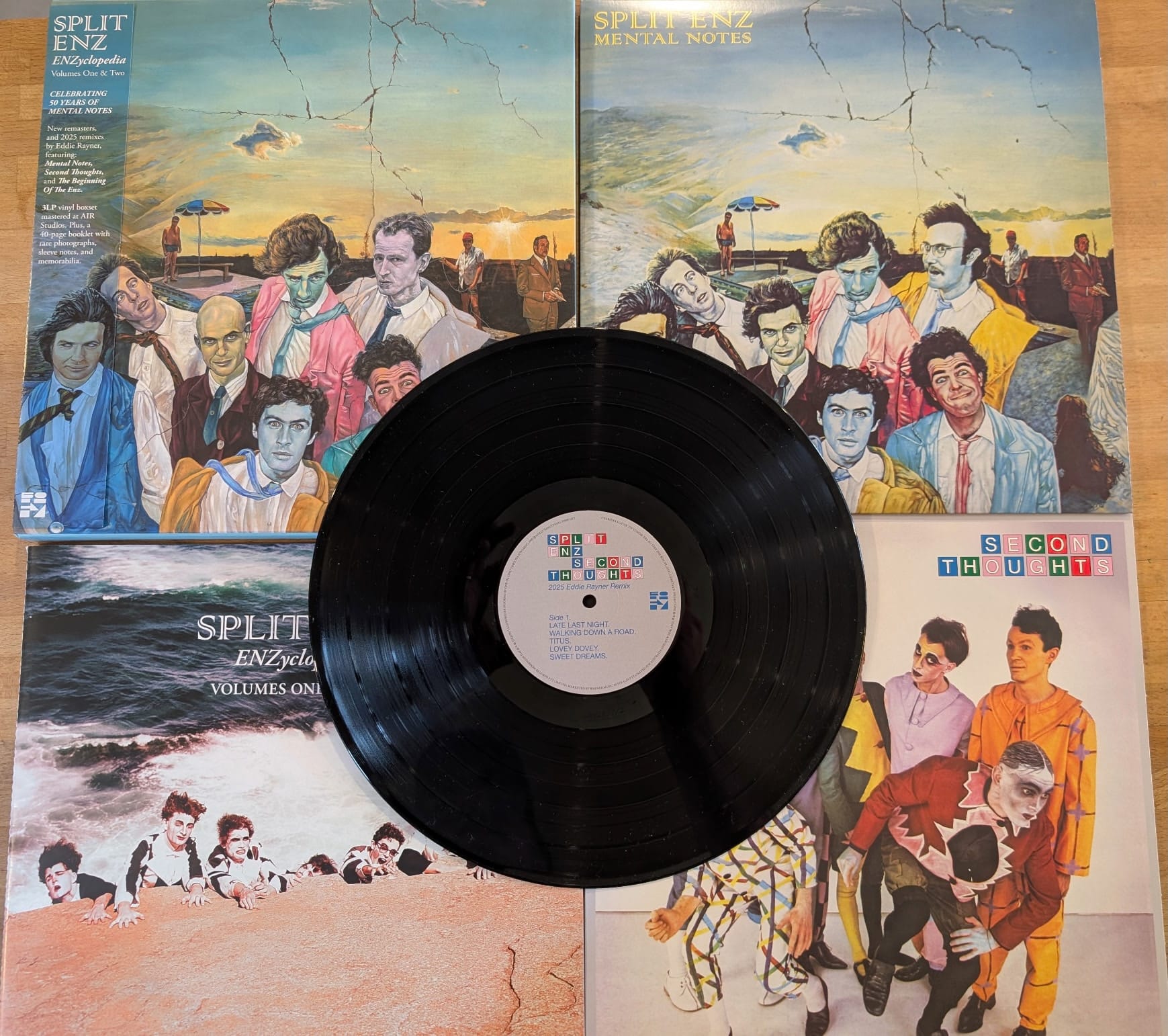
As this would be the first music by the band to be released outside Oceania, it was decided to circle back on some of the songs from Mental Notes, with the band re-recording four tracks from that LP—“Titus,” “Stranger Than Fiction,” “Walking Down a Road,” and “Time for a Change”—for the new one. (To complicate things further, the album was released as Mental Notes, with an updated version of that album’s artwork in North America and Europe.) The sound for each is fuller and more forceful, aided by trumpet and saxophone played by newest member Robert Gillies, replacing Wilkinson. Did that musical addition and the occasional guitar assist from Manzanera make the group sound at times a little bit like Roxy Music? Most definitely. But the group were already writing with much more directness and a clarity that could be called accessible if it weren’t for moments like the off-piste synth interlude in “Sweet Dreams” or the watery music-hall breakdown within “The Woman Who Loves You.”
Every moment of this snapshot of Split Enz’s history is rendered with welcome clarity on this collection. The albums themselves were remastered by band member Eddie Rayner, and he had a hand in remixing some of the tracks on Beginning. With audio mastered by Phil Kinrade in London’s AIR Studios, there’s not a hair out of place throughout all three discs. I balk a little at the remixing choices that Raymer made—adding little synth overlays to an early version of “Spellbound” and throwing some unnecessary reverb on other tunes—but it all has the dynamic range and fine balance of tones necessary to bring these elaborate songs to proper life.
My experience could have gone much differently though. The packaging is my only real complaint. Rather than have the vinyl in proper jackets, Chrysalis opted to slip each disc into a thin cardstock sleeve with the original artwork for each album printed on it. Not even a paper inner for protection. The decision left a few nasty looking scuffs on my copy of Second Thoughts and Beginning, but blessedly they were not audible through multiple plays. (And the less said about the godawful artwork the band chose for the Beginning disc, the better.)
After Second Thoughts was finished, the band immediately changed. Drummer Crowther departed the group first, followed by Chunn and, crucially, Phil Judd, who had grown frustrated with Finn. But their leaky boat weathered that storm with ease, bringing Tim’s younger brother Neil Finn and his formidable pop songwriting skills into the fold. Greater heights awaited them all, but that’s a story for future volumes of the ENZyclopedia.
ENZyclopedia Volumes One & Two | Chrysalis 3-LP 33 RPM • audio mastered from unknown source by Phil Kinrade at AIR Studios • lacquer cut by Henry Rudkins at AIR Studios • pressed at GZ, Czech • black vinyl
Listening equipment:
Table: Cambridge Audio Alva ST
Cart: Grado Green3
Amp: Sansui 9090
Speakers: Electro Voice TS8-2

Chet Baker: Swimming by Moonlight
Review by Ned Lannamann
I don’t think anybody expected a new Chet Baker album in the year 2025. And that’s not what Swimming by Moonlight is, exactly—these recordings have been around for nearly four decades, long after Baker himself has departed—but it may be the closest thing possible. Taken from archival tapes logged at the time of filming the 1988 documentary Let’s Get Lost, those sessions saw the heroin-ravaged Baker nearing the end of his life, his voice becoming dimmer and more whisperlike but never losing its smoothness, mystery, or intonation. And his trumpet playing was undiminished, maintaining the tenets of his particular style of cool West Coast jazz that underpinned his entire career.
Indeed, Baker listeners like me find themselves torn between his performances as a singer and his immaculate trumpet work. Vocally, Baker was a sentimentalist, delivering ballads in an impossibly direct, even tone, with minimal bravado and an inflection that suggested a placid, almost indifferent interiority. I’m more drawn to Baker’s trumpet playing, which possessed the same communicative qualities as his vocal work but was a more diverse tool, allowing for jumps, leaps, and exciting rhythms—I find Baker the singer to be closer to Baker the addict, concealing more than he’s revealing, while Baker the trumpeter to me seems a fully expressive and alive creative force.
Swimming by Moonlight has both Bakers in full effect, and the recordings are derived from four different sources. Side 1 contains a 1986 session recorded in Hollywood—and includes the early John Williams composition “Make Me Rainbows” from the 1967 film Fitzwilly—while Side 2 was recorded in Paris a year later, and features renditions of Henri Betti’s “C’est Si Bon’ and Antônio Carlos Jobim’s “Quiet Nights.” These are more reliant on Baker’s vocals and lighter on his trumpet work. Most of the second LP is taken up with the wonderful 1987 live performance in Cannes seen in Let’s Get Lost; the rendition of Elvis Costello’s “Almost Blue” here is the same one that memorably closes the film. There are also exciting takes of Miles Davis’s “Milestones” and Sam Rivers’s “Beatrice.” And lastly, there’s a stand-alone rendition of “So Hard to Know” on Side 4 that was recorded in Rio de Janeiro in 1985 with an entirely different outfit—one led by Rique Pantoja, who wrote the song. It’s the schmaltziest stretch on the album, interrupting the flow of the Cannes show but revealing a side of Baker that emphasizes his affinity for globetrotting.
Otherwise, Baker’s backing musicians throughout these recordings primarily include pianist Frank Strazzeri and bassist John Leftwich, who also serves as producer for the album. I believe it was Leftwich who assembled the takes and turned the tapes into something presentable. Outside musicians were brought in to beef things up after the fact, although the credits don’t make it obvious what was added where. Additionally, in the liner notes, Leftwich briefly touches on how he “worked to make Chet’s voice sound clear,” which may have been necessary due to the low volume of his vocalizing. While there may have been some sweetening or processing to emphasize the blurry, patinaed quality Baker’s voice had acquired by this time, the online accusations of AI being used—mostly coming from the dreaded wasteland of YouTube comments sections—seem unlikely to me. There are only a handful of instances where Baker’s voice sounds unnatural; “I Can Dream, Can’t I?” is probably the clearest example. I also hasten to add that Baker’s voice was so even-keeled and vibrato-free that it possessed inhuman qualities of its own ever since he first crooned into a mic.
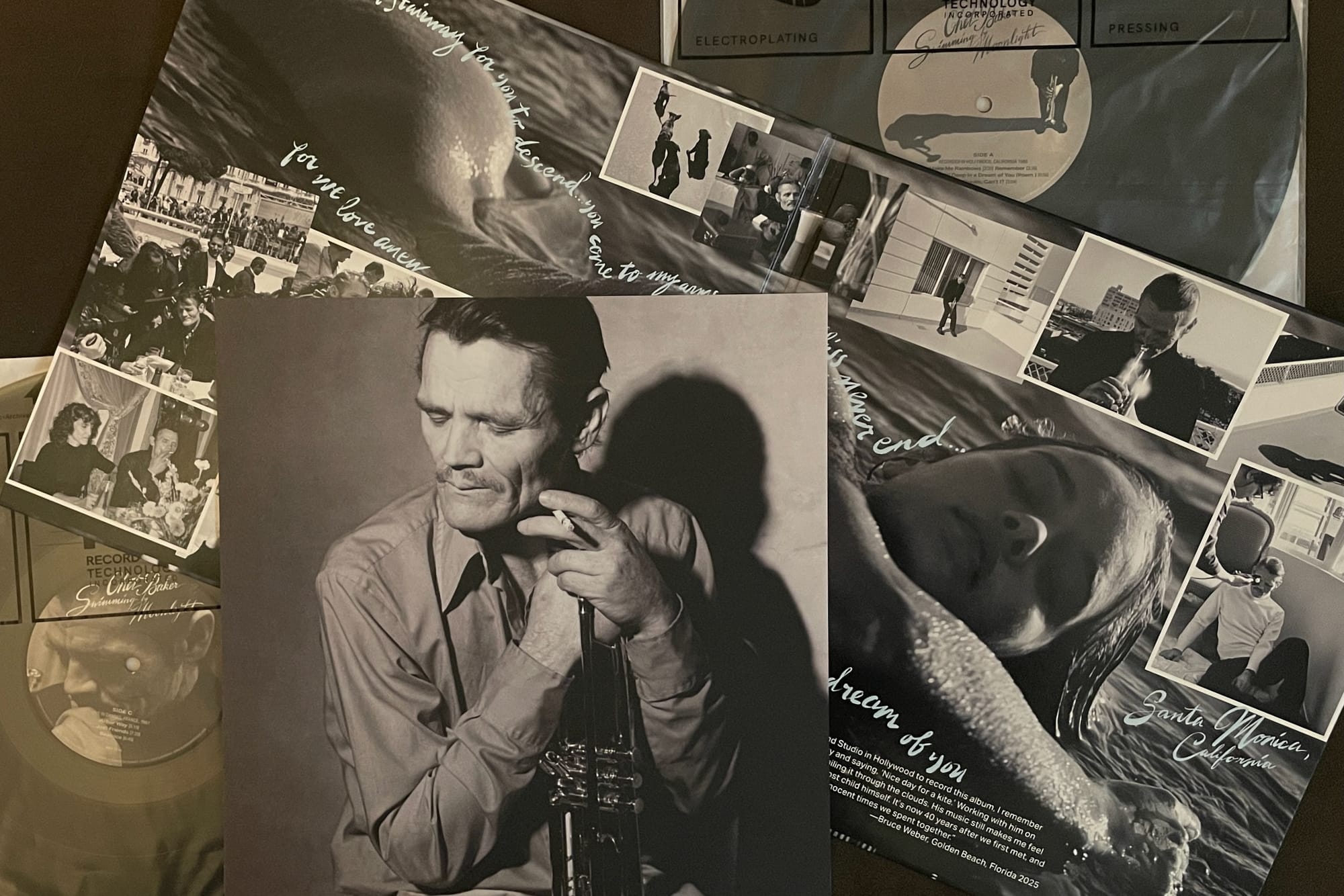
The recordings themselves are buttery-smooth, with minimal instrumentation and unhurried rhythms. It’s late-night relaxing music, meant to evoke the black-and-white glamour of Let’s Get Lost, a film that bounced between depicting the reality of Baker’s life and surroundings—in particular, the family members he affected with his drug problems—and creating a dreamlike pleasuredome where the sensuous interiority suggested by Baker’s music was made tangible.
The pressing and packaging are beyond reproach. The discs were cut by Levi Seitz at Black Belt Mastering in Seattle, and he’s done an incredible job making the source material—a 48kHz/24-bit digital transfer of the original analog tape—sound full, fluid, and instinctively musical. The discs were pressed at RTI and come inside the plant’s branded poly inners; the vinyl itself is the Neotech VR100 compound, and my copy was flawless, flat, and had dead-silent backgrounds, with nary a stray crackle or tick to take attention away from the at-times minimal recordings. The jacket is a Stoughton tip-on gatefold with artwork based around black-and-white photography by Let’s Get Lost director Bruce Weber—the front cover and inner photo contains some stuff-of-dreams images of actress Lisa Marie, who features memorably in the movie. An insert contains liner notes (liner notes!) that transcribe a conversation between Leftwich, Weber, and Let’s Get Lost producer Nan West, detailing their recollections of Baker during the filming of the documentary and these recording sessions.
Perhaps best of all, this may not be the final word on Baker—in the liners, Leftwich says, “There was so much material that we were able to mix and edit this double album, with enough material left over for another one in the future.” I’ll be eager to hear more from the Cannes date as well as some of the looser, more off-the-cuff stuff we see snippets of in the film. But for now we have this superbly mastered and pressed supplement to Let’s Get Lost that gives us a greater understanding of Baker, a tormented soul who trafficked in tranquility.
Swimming by Moonlight | Slow Down Sounds 2-LP 33 RPM • lacquer cut from 48kHz/24-bit digital file by Levi Seitz at Black Belt Mastering • pressed at Record Technology Incorporated (RTI) • black vinyl (“smoky moonlight mood” variant also available)
Listening equipment:
Table: Technics SL-1200MK2
Cart: Audio-Technica VM540ML
Amp: Luxman L-509X
Speakers: ADS L980

Rousers: 1979 Sire Session
Review by Robert Ham
Though their name doesn't appear in the pages of Please Kill Me, the throwback rock quintet known as the Rousers were beloved among the bookers and denizens of the Gotham rock scene. Indeed, they're not mentioned in Legs McNeil and Gillian McLain’s oral history of punk’s formative years, nor in other explorations of the New York music community in the late ’70s and early ’80s like Phil Marcade’s Punk Avenue.
After an apparently fine showing at one of CBGB’s audition nights, they were embraced by Peter Crowley, the booker for Max’s Kansas City, Manhattan’s other cultural hotbed. Amid the collage of ephemera printed on the inner sleeve of 1979 Sire Session, a recently released collection of twangy, duckwalking demos the quintet made on Seymour Stein’s dime with producer Ed Stasium, are numerous clippings advertising the Rousers gigs at Max’s. There they are, opening up for the likes of Dead Boys and the Troggs, or headlining their own gigs at that Manhattan club with support provided by former Breakfast Club drummer Madonna.
And if the welcome if discursive liner notes for this release, written by Ugly Things magazine contributor Tim Stegall, are to be believed, they were a force to be reckoned with on stage. According to Stegall, the Rousers had “all the aggression of the Heartbreakers or Ramones” and played with “dragstrip rock ’n’ roll energy.”
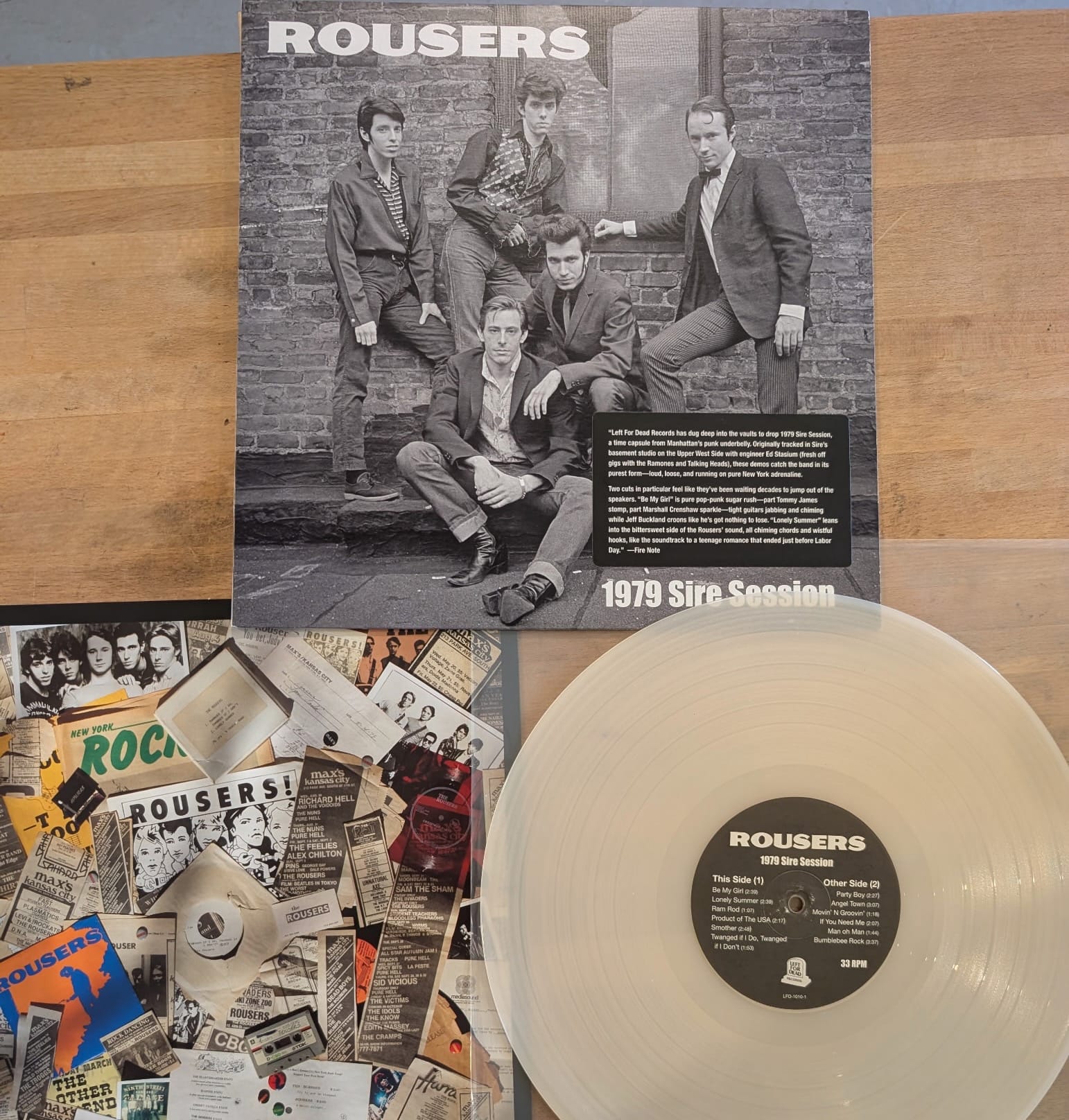
If so, Sire Session is a poor representation of what the band had to offer during their heyday. Recorded at Sire’s basement studio in the Upper West Side over a weekend in March ’79, the session was an attempt to capture one of the Rousers’ live sets on tape. As such, Stasium had the band record without overdubs, straight on to the eight-track reels. The quintet comport themselves well enough, knocking out a sturdy, well-rehearsed set of originals and covers of ’50s/’60s rockers that influenced them, like Duane Eddy’s “Ram Rod” and Wilson Pickett’s “If You Need Me.” As we’ve come to expect from projects with Stasium’s name attached, the session sounds great, and it is represented nicely on this vinyl release. Mastered from a digital source by Bob Stander at Parchessi Studio and pressed from a lacquer cut by Gene Paul at G&J Audio, the translucent white version I was sent to review was flawless, if a bit on the quiet side.
That muted sound quality may account for how starchy this set comes across. Flickers of the Rousers’ apparent raw power come across on tracks like the frug-ready “Lonely Summer” and the nicely heated “Product of the USA,” but there’s nothing to help the material spill madly over into brilliance. Vocalist Jeff Buckland is a steady presence, evoking Buddy Holly at times, and the twin guitars of Bill Dickson and Tom Milmore complement each other comfortably. But at a session like this, meant to impress their potential benefactor of their commercial prospects, they needed to really flash their claws and fangs. Maybe those sharp edges came out when on stage and faced a crowd of hungry music fans. Here, they come across like the nice lads you can take home to mom.
1979 Sire Session | Left for Dead/Jimboco 1-LP 33 RPM • audio mastered from digital source by Bob Stander at Parchessi Studio • lacquer cut by Gene Paul at G&J Audio • pressed at Microforum in Toronto, Ontario • translucent white vinyl (black vinyl also available)
Listening equipment:
Table: Cambridge Audio Alva ST
Cart: Grado Green3
Amp: Sansui 9090
Speakers: Electro Voice TS8-2
